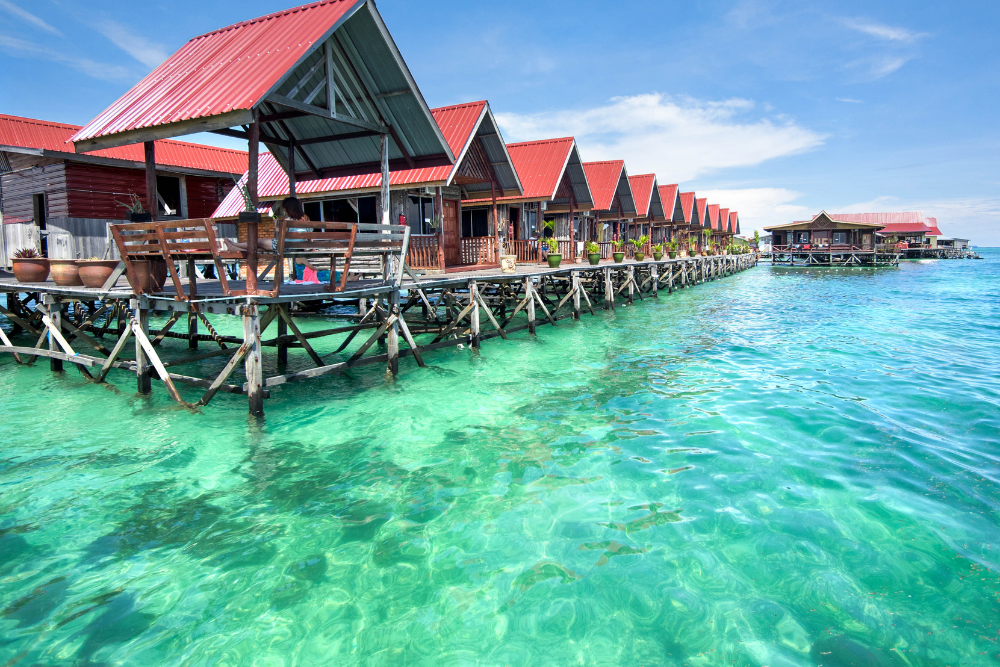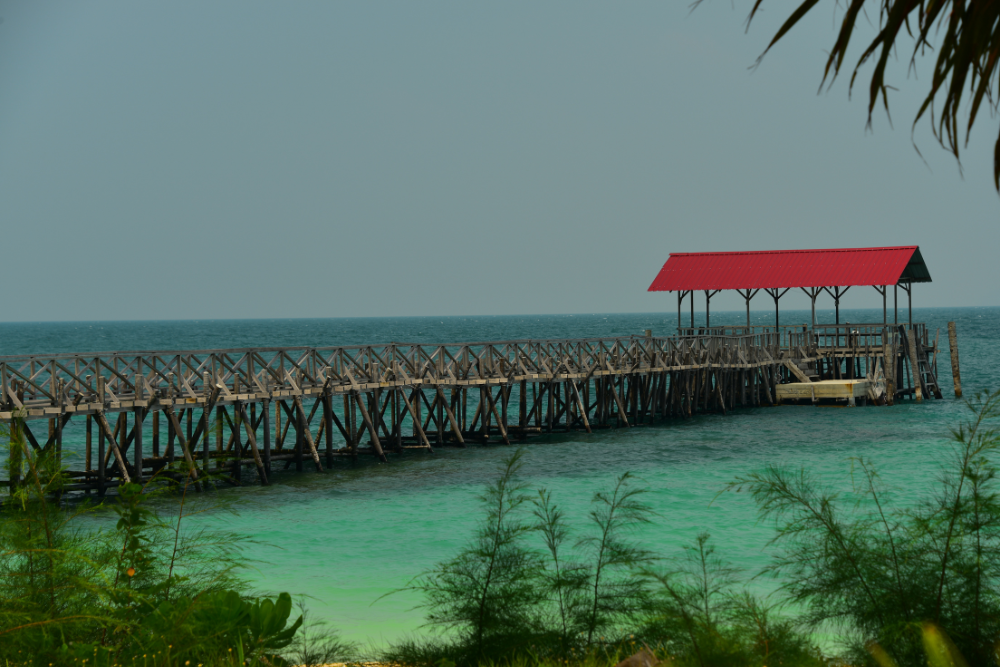Malaysia is known for its pristine beaches, lush rainforests, and vibrant cities, but beneath the surface, the country harbors some of the most spectacular and underrated diving spots in Southeast Asia. While the more famous locations like Sipadan and Langkawi often steal the spotlight, Malaysia is home to a wealth of hidden gems, where divers can explore untouched reefs, encounter exotic marine life, and experience unparalleled underwater beauty.
In this guide, we’ll take you on a journey to discover Malaysia’s best-hidden diving spots, ideal for those seeking tranquility, natural beauty, and a true escape from the crowds.
1. Tenggol Island, Terengganu
Located off the east coast of Peninsular Malaysia, Tenggol Island is a hidden gem that promises some of the best diving experiences in the country. Though it’s lesser-known compared to its more famous counterparts, Tenggol offers an exceptional underwater experience with pristine coral reefs, crystal-clear waters, and vibrant marine life. The island is part of the Tenggol Marine Park, a protected area rich in biodiversity.
What makes it special:
- Diverse marine life: Expect to encounter colorful coral gardens, schools of tropical fish, and larger species like barracudas and reef sharks.
- Shallow and deep dives: The island offers diving options suitable for all levels, with sites like Tenggol Rock and Duyong Rock being ideal for both novice and experienced divers.
- Seclusion: Since Tenggol is still off the radar for many tourists, it offers a peaceful, uncrowded experience, perfect for those who want to dive in tranquility.
Best time to dive: April to October (during the dry season).
2. Pulau Sibu, Johor
Pulau Sibu, a small island located in the southern region of Malaysia, is a hidden paradise known for its serene atmosphere and vibrant underwater world. Despite being located close to the bustling city of Johor Bahru, Pulau Sibu remains relatively undiscovered by international tourists, making it an excellent option for divers seeking a more secluded experience.
What makes it special:
- Clear, warm waters: The visibility in Sibu’s waters can reach up to 25 meters, providing excellent conditions for diving and snorkeling.
- Rich biodiversity: The island’s underwater world is teeming with marine life, including soft corals, nudibranchs, sea turtles, and a variety of reef fish.
- Accessible dive sites: Sites like Tokong Laut and Sibu Reef feature easy-to-navigate dive spots that allow divers to enjoy vibrant coral reefs and diverse marine ecosystems.
Best time to dive: March to November (avoiding the monsoon season).
3. Mabul Island, Sabah
While Mabul Island is often overshadowed by its more famous neighbor, Sipadan, this quiet island offers some fantastic diving opportunities in its own right. Located off the east coast of Borneo, Mabul is known for its incredible macro diving experiences and diverse marine life, including both reef and pelagic species.
What makes it special:
- Macro diving heaven: Mabul is renowned for its macro diving, with divers able to spot rare and exotic creatures like frogfish, seahorses, ghost pipefish, and a variety of nudibranchs.
- Unique dive sites: The island boasts several exceptional dive sites such as The Jetty and Old Mabul, where you can dive alongside vibrant coral reefs and fascinating critters.
- Calm and relaxed atmosphere: Mabul is quieter than Sipadan, making it ideal for those seeking a peaceful, laid-back diving experience without the crowds.
Best time to dive: April to December (when the weather is calm).
4. Pulau Tiga, Sabah
Known as “Survivor Island” (after being the filming location of the first season of the reality TV show Survivor), Pulau Tiga is one of the best-kept secrets of Borneo. Located just off the west coast of Sabah, Pulau Tiga is surrounded by crystal-clear waters and offers a rich diversity of underwater ecosystems, including coral gardens, wrecks, and tropical fish.
What makes it special:
- Unique underwater terrain: Pulau Tiga’s underwater world is a mix of coral reefs and rock formations, with vibrant marine life including triggerfish, moray eels, and sea turtles.
- Volcanic origins: The island is home to a unique natural feature — mud volcanoes that create an interesting atmosphere above and below the surface.
- Uncrowded and remote: Due to its remote location, Pulau Tiga sees fewer tourists, ensuring a more peaceful and exclusive diving experience.
Best time to dive: March to October.
5. Layang-Layang Island, Sabah
Layang-Layang Island, also known as “The Swallow Reef,” is a small, isolated island situated in the South China Sea, about 300 kilometers off the coast of Borneo. While it may not be as well-known as Sipadan, Layang-Layang is a true hidden gem, offering some of the best diving in Malaysia.
What makes it special:
- Wall diving: The island features breathtaking vertical coral walls that drop to depths of 2,000 meters, providing a stunning dive experience.
- Pelagic encounters: Layang-Layang is famous for its encounters with pelagic species such as schools of hammerhead sharks, manta rays, and whale sharks (during migration season).
- Exclusivity: Due to its remote location and limited accessibility, the island is a relatively uncrowded destination, allowing divers to enjoy a serene and uninterrupted underwater adventure.
Best time to dive: March to August (to witness the migration of pelagic species).
6. Pulau Besar, Melaka
Located off the coast of Melaka, Pulau Besar is an often-overlooked diving destination that boasts a fascinating underwater world. The island is known for its clear waters, diverse marine life, and rich coral reefs, making it an excellent destination for both beginner and experienced divers alike.
What makes it special:
- Great for all levels: The island offers dive sites suitable for all experience levels, including shallow reefs and deeper wreck dives.
- Diverse marine life: Divers can expect to see a range of tropical fish, vibrant coral reefs, and occasional sightings of larger species such as stingrays and turtles.
- Peaceful and quiet: Pulau Besar is not as touristy as other islands in Malaysia, offering a more relaxed and undisturbed diving experience.
Best time to dive: March to October.
7. Rawa Island, Johor
Rawa Island, located just off the southeastern coast of Peninsular Malaysia, is another hidden treasure that is perfect for diving enthusiasts. The island is known for its crystal-clear waters, thriving marine ecosystems, and the calm, peaceful atmosphere that makes it a great escape from the hustle and bustle of city life.
What makes it special:
- Pristine reefs: The island’s underwater world features well-preserved coral reefs, with an abundance of marine life such as clownfish, parrotfish, and reef sharks.
- Diving and snorkeling in harmony: Rawa Island offers a combination of shallow snorkeling spots and deeper dives, catering to divers of all skill levels.
- A remote escape: With fewer tourists than other popular islands, Rawa offers a tranquil, untouched diving experience.
Best time to dive: March to October.
Conclusion
Malaysia’s hidden diving spots provide a wealth of opportunities to explore stunning underwater ecosystems away from the crowds. Whether you’re interested in macro photography, wall dives, or encounters with pelagic species, these lesser-known destinations offer everything a diver could want in a tropical paradise. From the crystal-clear waters of Pulau Sibu to the remote beauty of Layang-Layang, these secret spots showcase the diverse and thriving marine life of Malaysia, making it an unforgettable destination for any diving enthusiast.
Next time you’re planning a diving adventure, consider exploring one of these hidden gems, and experience Malaysia’s underwater wonders in a more secluded, peaceful setting.












